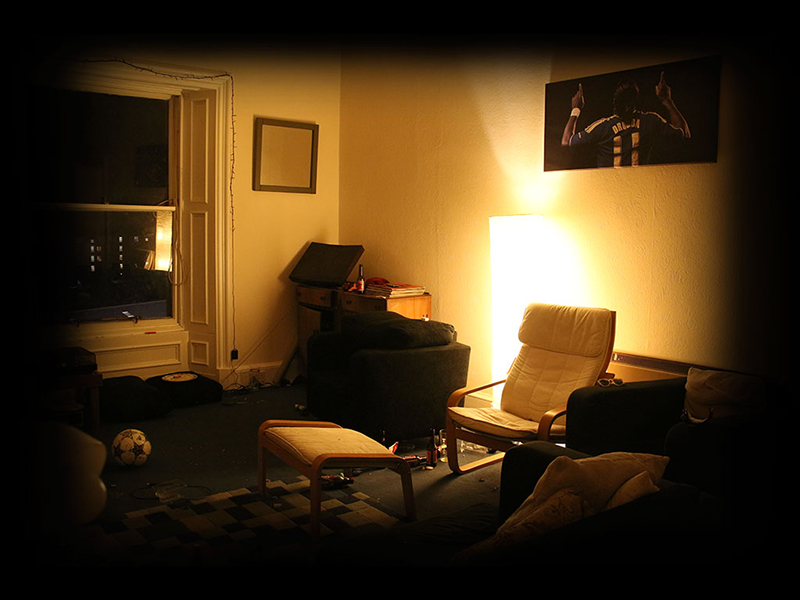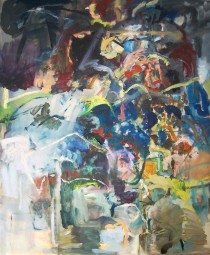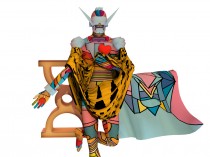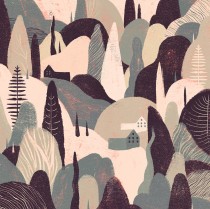Last month a collective of postgraduate students from Edinburgh College of Art launched DarkSound, an online soundscape experience that invites participants into a mysterious tenement building and immerses them in the sounds of the night. Stephanie Seeley from the collective tells us more.
As an MSc Design & Digital Media student you pick up a lot of new skills over the course of an academic year, particularly in the fields of design and web development. The Digital Media Studio Project is an opportunity to combine skills with fellow masters students in other courses for a semester long art project. In my experience, a group of six came together to create DarkSound, a project that was pitched to us by sound artist Zoe Irvine.
The DarkSound brief was a broad, creative exploration of darkness and night time: to represent elements of these themes in some way using sight and sound, with the specific criteria of only being accessible during the night. With three from my course (myself, Isaac Hinman and Zuo Mingni), a digital research student (Shang Qian) and individuals in the field of sound design (Robert Ewing) and composition (Thomas Hansen), we were broadly set for focusing our tasks among sonic and visual aspects.
We decided that by creating a piece of net-art we could approach the criteria of night only access and hone our sonic and visual skills through a new framework for presenting art, within the HTML5 canvas. As developed artworks in the canvas are still rare, there is scope for experimentation and future development. Isaac built the site, mainly in Adobe Flash CC (the only piece of existing software that can create and assemble canvas applications in an in-depth way that there is also documentation for), ironically spending quite a bit of time undoing some of what the software had compiled or trying to find workarounds to its scope issues.
As this medium could be home to audio and visuals, we thought it fitting to literally create a home that users could explore, to represent the subject. My part in this process was to photograph a building’s exterior and several interiors of people’s flats that would create an intimate environment, especially when set at night. As a new photographer, among other challenging experiences, I had numerous occasions of introducing myself to people right before taking pictures of their entire home and trying not to knock over the tripod more than once in the darkness around their life-long possessions. A lot of experimentation took place in these situations with different levels of darkness and external light from windows at night, and people were welcoming enough to let me into their homes until I’d tried almost every level of lighting in every room, opening and closing various doors in between as additional controls.
From earlier research I took during this project into themes of sleeplessness and creativity, I had interviewed someone to discuss their personal experiences of insomnia. This inspired further discussions with individuals on varied topics of lifestyles at night and a closer look at what affects routine (or lack thereof) at night: night shifts, newborns and social life to name a few. The discussions were recorded over Skype, giving similar tone to a phone call (especially after my part was edited out, creating the sensation for users of overhearing one end of a conversation). Zoe and I compared notes on what we found were salient elements to be edited into sound bites, as due to server size there were only so many clips we could include, that Robert neatly dissected – deciding where gaps in speech, breaths and other audible natural sounds should remain in place.
Isaac chose photographs to build from, that Zuo edited to enhance their stylistic consistency. I listened closely to the clips many times over while exploring the newly built DarkSound building to decide where each clip should be placed and ensure the final selections reflected the overall tone of conversation with each individual: where they could be factual and often amused by recalling or explaining something. I wanted to avoid portraying the conversations as overly dark and let the darkness of the topic speak for itself, even amongst the occasional giggle (which in particular can add impact from the juxtaposition of being overlaid on atmospheric sounds and images).
For me, the interviews are a complementary focal point to the artistry and visuals (which themselves feature no people, leaving just sonic and visual ‘evidence’ of people living) to draw a natural, inquisitive response from audience users. The voices bring attention not only to the night time scenes in the images but the subtlety of the ambient, diegetic sounds that Robert created to belong in each room. The music composed by Thomas, particularly for the building exterior – the first visual when accessing the piece – and party room, with Isaac’s structuring of the components also make DarkSound an enticing piece to explore.
Zuo and Shang worked with marketing materials created by Zuo to promote and record the reception of DarkSound since its launch on 9 April 2015, and gather feedback. As an online piece, Isaac has also been able to respond to feedback and view the DarkSound server’s status, which (as of 23 April 2015) has clocked 2,101 total page views from 745 unique users, from 58 different countries and growing.
DarkSound can be accessed after sunset at www.darksound-interactive.com. Early discussions and additional DarkSound content can be found at our blog.
//////
Want to read more blogs by artists? Look here.


















Comments